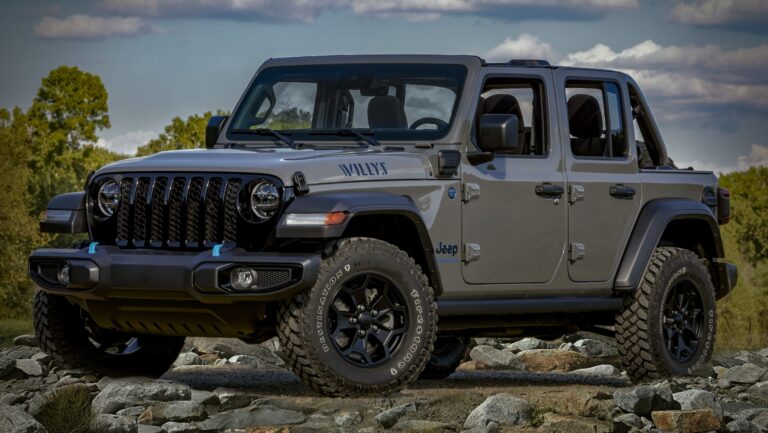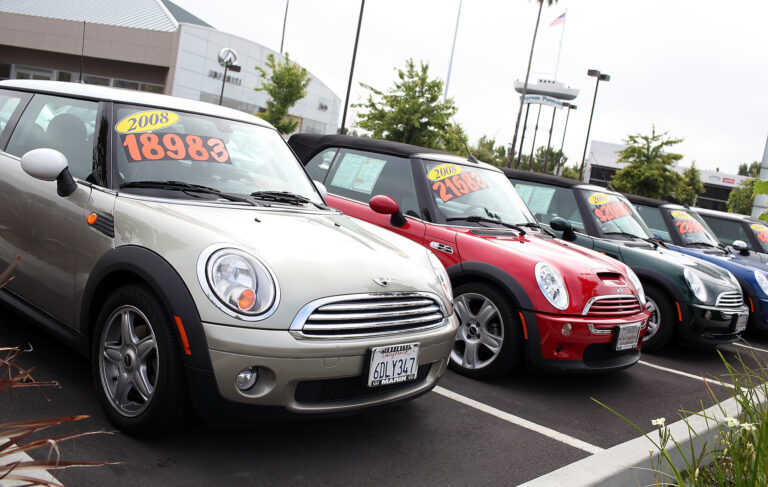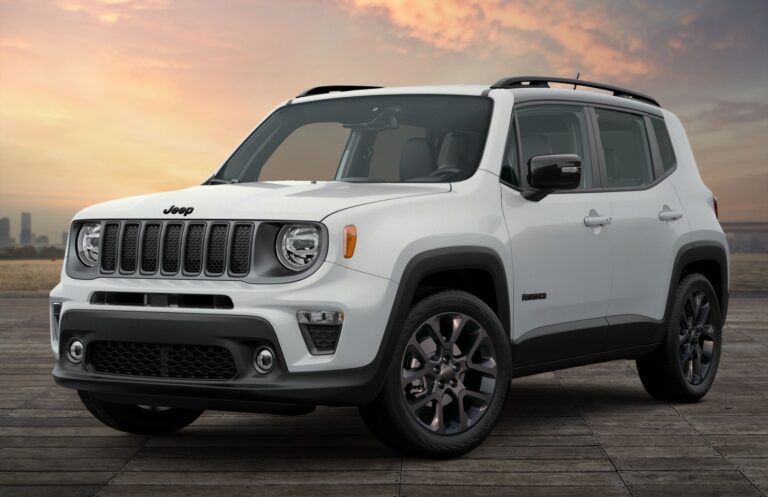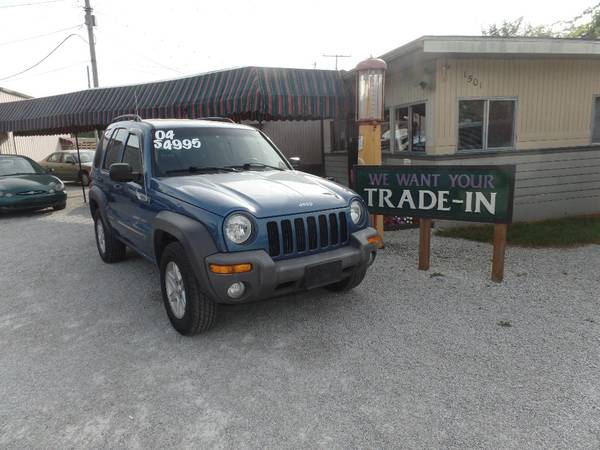1946 Willys Jeep For Sale: Your Guide to Owning a Piece of Automotive History
1946 Willys Jeep For Sale: Your Guide to Owning a Piece of Automotive History jeeps.truckstrend.com
Introduction
In the annals of automotive history, few vehicles command the same level of iconic recognition and rugged admiration as the Willys Jeep. Born from the crucible of World War II, this unassuming four-wheel-drive utility vehicle became an indispensable tool of Allied victory. As the war concluded, Willys-Overland wasted no time in transitioning this battle-hardened hero to civilian life, giving birth to the CJ (Civilian Jeep) series. Among the earliest and most historically significant of these civilian iterations is the 1946 Willys Jeep, specifically the CJ-2A model.
1946 Willys Jeep For Sale: Your Guide to Owning a Piece of Automotive History
When you encounter a "1946 Willys Jeep For Sale," you’re not just looking at a used vehicle; you’re exploring an opportunity to own a tangible piece of post-war American ingenuity, a testament to utility, simplicity, and enduring design. These vehicles represent a pivotal moment when military technology found its way into the hands of farmers, adventurers, and everyday Americans, laying the groundwork for the modern SUV. For enthusiasts, collectors, or anyone seeking a unique and capable vintage machine, understanding what to look for in a 1946 Willys Jeep is paramount.
The Legacy of the Civilian Jeep: The 1946 CJ-2A
To truly appreciate a 1946 Willys Jeep, one must understand its heritage. The original military Willys MB (and Ford GPW) proved its worth in every theatre of war, known for its "Go-Anywhere, Do-Anything" capability. As soldiers returned home, they often expressed a desire for a civilian version of the robust vehicle they had come to rely on. Willys-Overland responded swiftly, introducing the CJ-2A in 1945, making 1946 one of its earliest and most prolific production years.
The 1946 CJ-2A shared much of its DNA with its military predecessor, including the venerable "Go-Devil" L-134 flathead four-cylinder engine, a three-speed T-90 transmission, and a two-speed transfer case. However, key modifications were made for civilian use: a tailgate, larger headlights, a side-mounted spare tire, and a simplified electrical system. These early CJ-2As were marketed as "The Universal Jeep," designed for farming, construction, and general utility. Their rugged simplicity and legendary off-road prowess quickly cemented their place in American culture, making them highly sought-after collector items today.
What to Look For When Buying a 1946 Willys Jeep
Acquiring a vintage vehicle like a 1946 Willys Jeep requires a discerning eye and a clear understanding of its condition. Here are critical areas to inspect:

- Rust: This is the ultimate enemy of any vintage vehicle. Pay close attention to the frame (especially around the spring hangers and cross members), the body tub (floorboards, hat channels under the floor, rear wheel wells), and the fenders. Surface rust is common and manageable, but deep, structural rust or extensive perforations can be a deal-breaker or require costly repairs.
- Engine (Go-Devil L-134): Check for oil leaks, smoke from the exhaust (blue indicates oil burning, black indicates rich fuel mixture), and unusual noises. While the L-134 is known for its durability, neglect can lead to issues. Look for signs of proper maintenance, like clean oil and coolant.
- Drivetrain: Test the transmission through all gears (forward and reverse), listening for grinding or difficulty shifting. Engage the transfer case into both high and low range, and ensure the 4×4 engages smoothly. Check for excessive play in the universal joints and axle shafts.
- Steering and Brakes: Early Jeeps have manual steering and drum brakes, which require more effort than modern systems. Ensure there’s no excessive play in the steering wheel and that the brakes feel firm and stop the vehicle effectively without pulling to one side.
- Electrical System: Original 6-volt systems can be finicky. Check that all lights, gauges, and the starter motor function correctly. Many Jeeps have been converted to 12-volt; ensure this conversion was done professionally.
- Authenticity and Originality: Decide if originality is important to you. Look for original components like the specific "Willys" script on the tailgate, the correct gauges, and the original carburetor. Many Jeeps have been modified over the decades, which can affect value and driving experience.
- Paperwork: A clear title is absolutely essential. Verify the VIN (Vehicle Identification Number) on the title matches the frame stamping (typically on the passenger side front frame rail). Research the vehicle’s history if possible.
Restoration Levels and Their Impact on Value
The condition of a 1946 Willys Jeep directly correlates with its price and the effort required from the buyer.
- Barn Find / Project Vehicle: These are typically non-running, incomplete, or heavily rusted examples. They represent the lowest entry cost but demand the most significant investment in time, money, and expertise for a full restoration. Expect to replace most mechanical components and address extensive bodywork.
- Driver Quality: These Jeeps are functional and presentable but may have minor cosmetic flaws, some deferred maintenance, or non-original parts. They are ready to be driven and enjoyed immediately, though they might benefit from ongoing improvements. This is often a sweet spot for enthusiasts who want to enjoy the vehicle without breaking the bank on a show-quality restoration.
- Partial Restoration: The vehicle has undergone some significant work (e.g., new paint, engine rebuild) but still requires further attention in other areas (e.g., interior, electrical, minor bodywork). These can be good opportunities if the work completed is of high quality.
- Full Restoration / Concours Quality: These Jeeps have been meticulously restored to original or near-original specifications, often better than new. Every component is addressed, and the finish is show-quality. These command the highest prices and are typically sought by serious collectors or those who want a turn-key, perfect example.
Where to Find a 1946 Willys Jeep For Sale
Finding your ideal 1946 Willys Jeep requires a bit of detective work:
- Online Marketplaces: Websites like eBay Motors, Hemmings Motor News, Bring a Trailer, and ClassicCars.com frequently list vintage Jeeps. Specialized forums and Facebook groups dedicated to Willys Jeeps are also excellent resources.
- Classic Car Dealers: Reputable dealers specializing in vintage military or utility vehicles may have restored or driver-quality Jeeps.
- Auctions: Major automotive auctions (e.g., Mecum, Barrett-Jackson) occasionally feature high-end restored Jeeps, while local auctions might offer project vehicles.
- Word of Mouth & Local Classifieds: Sometimes the best deals are found through local networks or classifieds, often from owners who aren’t tech-savvy.
Tips for a Successful Purchase
- Set a Realistic Budget: Beyond the purchase price, factor in transportation, registration, insurance, and immediate post-purchase maintenance or repairs.
- Conduct a Thorough Inspection: If possible, inspect the vehicle in person. If not, hire a qualified vintage vehicle mechanic for a pre-purchase inspection (PPI). This is an invaluable investment.
- Test Drive: Even if it’s a short drive, assess the engine performance, transmission shifting, braking, and steering. Listen for unusual noises.
- Research Comparable Sales: Look at recent sales of similar condition 1946 Willys Jeeps to understand fair market value.
- Don’t Rush: Take your time. The right Jeep will come along. Avoid impulse buys, especially with vintage vehicles.
- Understand the Commitment: Owning a vintage Jeep is a hobby. Be prepared for ongoing maintenance, the unique driving experience, and the joy of being part of a passionate community.
Owning and Maintaining a Vintage Willys Jeep
Owning a 1946 Willys Jeep is a rewarding experience, but it comes with its own set of considerations:
- Parts Availability: Surprisingly, parts for CJ-2A Jeeps are relatively easy to find. Several specialized vendors (e.g., Kaiser Willys Auto Parts, Walck’s 4WD) offer a wide range of reproduction and NOS (New Old Stock) parts, from mechanical components to body panels.
- Mechanical Simplicity: The "Go-Devil" engine and basic mechanicals are straightforward, making them relatively easy for a competent DIY mechanic to work on.
- Driving Experience: Be prepared for a raw, unrefined driving experience. These Jeeps lack power steering, power brakes, air conditioning, and modern suspension. They are slow by modern standards and best suited for back roads, parades, or off-road adventures, not daily highway commuting.
- Community Support: The Willys Jeep community is vast and supportive. Online forums, local clubs, and national organizations provide a wealth of knowledge, advice, and camaraderie.
Potential Challenges and Solutions
- Rust: As mentioned, rust is a primary concern. Solution: Thorough inspection, professional bodywork, or choosing a rust-free example. Preventative measures like regular cleaning and proper storage are crucial.
- Lack of Modern Comforts: If you desire more comfort, minimal reversible modifications like better seats or a 12-volt conversion (for brighter lights/easier starting) can be considered, but always balance this with preserving originality.
- Finding Skilled Mechanics: While simple, not all modern mechanics are familiar with vintage vehicles. Solution: Seek out specialists, connect with local Jeep clubs for recommendations, or learn to do some work yourself.
- Highway Driving: The low top speed (around 45-50 mph comfortably) and lack of safety features make highway driving challenging. Solution: Trailer the Jeep to events, stick to back roads, or accept its limitations.
1946 Willys Jeep For Sale: Estimated Price Guide
The price of a 1946 Willys Jeep can vary significantly based on its condition, originality, and location. This table provides a general guide:
| Condition Category | Estimated Price Range (USD) | Key Characteristics & Notes |
|---|---|---|
| Barn Find / Project | $5,000 – $12,000 | Non-running, incomplete, extensive rust, missing parts. Requires full restoration. |
| Driver Quality | $12,000 – $25,000 | Running, drivable, presentable but not perfect. May have minor issues or non-original parts. |
| Partial Restoration | $25,000 – $40,000 | Significant work completed (e.g., engine rebuild, new paint), but still needs attention in other areas. |
| Fully Restored / Concours | $40,000 – $70,000+ | Meticulously restored to original specifications, show-quality finish, all systems functional. |
Note: Prices can fluctuate based on market demand, historical significance of a particular vehicle, and region.
Frequently Asked Questions (FAQ)
Q1: What’s the main difference between a military Willys MB and a civilian CJ-2A?
A1: While similar, the CJ-2A (like the 1946 model) has several civilian-oriented features: a tailgate, larger headlights, a side-mounted spare tire, a simpler instrument panel, and often more robust civilian-grade components. The military MB lacked a tailgate and had blackout lights.
Q2: Are parts for a 1946 Willys Jeep easy to find?
A2: Yes, surprisingly so! Due to their popularity and simple design, numerous aftermarket companies and specialized vendors offer a wide range of reproduction and New Old Stock (NOS) parts, making restoration and maintenance relatively straightforward.
Q3: Can a 1946 Willys Jeep be driven on modern highways?
A3: Technically, yes, but it’s not recommended for long distances or high speeds. Their top comfortable speed is usually around 45-50 mph, and they lack modern safety features, power steering, and power brakes. They are best suited for local roads, off-roading, or parades.
Q4: What is the "Go-Devil" engine?
A4: The "Go-Devil" (L-134) is the nickname for the Willys-Overland 134 cubic inch (2.2L) flathead four-cylinder engine. It’s renowned for its incredible durability, simplicity, and low-end torque, which made it ideal for utility and off-road use.
Q5: Is a 1946 Willys Jeep a good investment?
A5: While not typically a high-return financial investment like some exotic cars, a well-maintained or restored 1946 Willys Jeep tends to hold its value or even appreciate slightly over time, especially given its iconic status. Its true value often lies in the enjoyment of ownership and historical significance.
Q6: How much does it cost to restore a 1946 Willys Jeep?
A6: Restoration costs vary wildly depending on the starting condition and desired finished quality. A full, professional, concours-level restoration can easily exceed $30,000-$50,000, not including the initial purchase price. A DIY restoration can be much cheaper but demands significant time and effort.
Conclusion
A "1946 Willys Jeep For Sale" isn’t just an advertisement for a vehicle; it’s an invitation to connect with a pivotal moment in automotive history. These early CJ-2A models embody the spirit of post-war America: resourceful, rugged, and ready for anything. Whether you’re a seasoned collector seeking a meticulously restored showpiece or an aspiring enthusiast looking for a rewarding project, the journey of acquiring and owning a 1946 Willys Jeep promises to be as unique and adventurous as the vehicle itself. With careful research, a thorough inspection, and a passion for vintage machines, you can bring home a piece of the past that continues to inspire and perform today.




